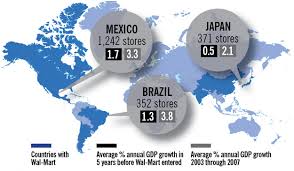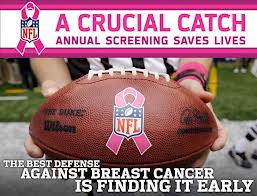With whom is your non-profit in bed?
By Dani Robbins
Re-published with permission from nonprofit evolution blog
 Politics — and non-profit fundraising — make strange bed fellows. Most non-profits look for donosr and sponsors. At some point, there will be a conflict between the mission of the non-profit and the reputation (earned or unfair) of the potential sponsor. Some donors and sponsors will be better for your mission than others. A Gift Acceptance Policy can help you determine what’s best for your organization.
Politics — and non-profit fundraising — make strange bed fellows. Most non-profits look for donosr and sponsors. At some point, there will be a conflict between the mission of the non-profit and the reputation (earned or unfair) of the potential sponsor. Some donors and sponsors will be better for your mission than others. A Gift Acceptance Policy can help you determine what’s best for your organization.
When I used to run local Boys & Girls Clubs, the national organization — Boys & Girls Clubs of America (BGCA) — held a workshop encouraging board members and executive staff to talk through potential gift acceptance liabilities. The scenario they offered was this:
“A local restaurant, known for well endowed waitresses in skimpy uniforms, who’s owner is the friend of a Board member, wants to donate $10,000 and conduct a public media blitz connecting the two organizations.”
 Of course, my brain immediately went to the possibility of a billboard with two scantily clad waitresses in low cut very tight Boy & Girls Clubs tee-shirts. (Note: Boys & Girls Clubs, among many other amazing and life changing programs, have self esteem programs for young women as well as a similar program for boys teaching them what it means to be a man.)
Of course, my brain immediately went to the possibility of a billboard with two scantily clad waitresses in low cut very tight Boy & Girls Clubs tee-shirts. (Note: Boys & Girls Clubs, among many other amazing and life changing programs, have self esteem programs for young women as well as a similar program for boys teaching them what it means to be a man.)
BGCA offered the question “Do you accept the gift?”
The two Board members with whom I attended immediately said, “Yes!” My reply was “Over my dead body!”
 BGCA encourages its local Club leadership to talk about such things, and Clubs across the country are better for it. Since I opened my consulting firm, I have found that this to be the exception, not the rule.
BGCA encourages its local Club leadership to talk about such things, and Clubs across the country are better for it. Since I opened my consulting firm, I have found that this to be the exception, not the rule.
The Susan G. Komen Foundation, in addition to the incredibly negative press it received in 2012 for its decision to defund and then re-fund Planned Parenthood, was also cited on NPR.org for its “2010 ‘Buckets for the Cure’ campaign with Kentucky Fried Chicken. Some studies have linked fatty foods to a higher risk of cancer.”
According to the documentary philanthropy.com, the World Wildlife Fund (WWF) got in trouble with some of its supporters for accepting a large gift from Coca Cola. At the time, Coke was accused of sucking up (literally) the limited drinking water supply from the very poor in India to support a local bottling plant. Some WWF supporters claimed that Coke was only supporting the WWF to buy its way back into love.
Is there a similar PR problem in your non-profit’s future? Does your organization have a gift acceptance policy?
Polices, like plans, allow you to frame and respond to the question at hand. Do you know — and like — with whom your non-profit is in bed? Could you defend it publically? As Komen, the World Wildlife Fund and others have learned, the day might come when you have to.


 Your non-profit brand is powerful. It is coveted by major corporations. It doesn’t matter if you are a major non-profit juggernaut like Boy Scouts or Girl Scouts or if you’re a teeny-tiny rowboat out there in the vast ocean of non-profit organizations. You are still valued. The mere fact that you are a non-profit organization, regardless of your mission, in and of itself is valued by corporate America.
Your non-profit brand is powerful. It is coveted by major corporations. It doesn’t matter if you are a major non-profit juggernaut like Boy Scouts or Girl Scouts or if you’re a teeny-tiny rowboat out there in the vast ocean of non-profit organizations. You are still valued. The mere fact that you are a non-profit organization, regardless of your mission, in and of itself is valued by corporate America. The following are all facts (OK, they are facts
The following are all facts (OK, they are facts  Have you heard of the “Halo Effect“?
Have you heard of the “Halo Effect“? You may be wondering what I mean by “abusing your non-profit brand“. Here is just a short list of neglectful things:
You may be wondering what I mean by “abusing your non-profit brand“. Here is just a short list of neglectful things: Over the years, I’ve urged non-profit organizations to exercise tremendous caution when contemplating a cause related marketing strategy as part of their resource development plan. There was the December 2012 post titled “
Over the years, I’ve urged non-profit organizations to exercise tremendous caution when contemplating a cause related marketing strategy as part of their resource development plan. There was the December 2012 post titled “
 If you want to know more about this campaign, Forbes magazine’s Alicia Jessop did a nice job in an October 2012 article titled “
If you want to know more about this campaign, Forbes magazine’s Alicia Jessop did a nice job in an October 2012 article titled “
 They wanted me to round my total up to the nearest dollar. What I thought I had read was that they would donate (out of their pocket) the amount of the rounded sum. (You can see the screenshots of the information they provided me to the right of this paragraph)
They wanted me to round my total up to the nearest dollar. What I thought I had read was that they would donate (out of their pocket) the amount of the rounded sum. (You can see the screenshots of the information they provided me to the right of this paragraph)


 It is that time of the year when retailers are pulling out every stop in their little bag of tricks to get your attention and hopefully your holiday dollars. One of those shiny objects that some retailers use is called cause related marketing (CRM). Wikipedia does a nice job of
It is that time of the year when retailers are pulling out every stop in their little bag of tricks to get your attention and hopefully your holiday dollars. One of those shiny objects that some retailers use is called cause related marketing (CRM). Wikipedia does a nice job of